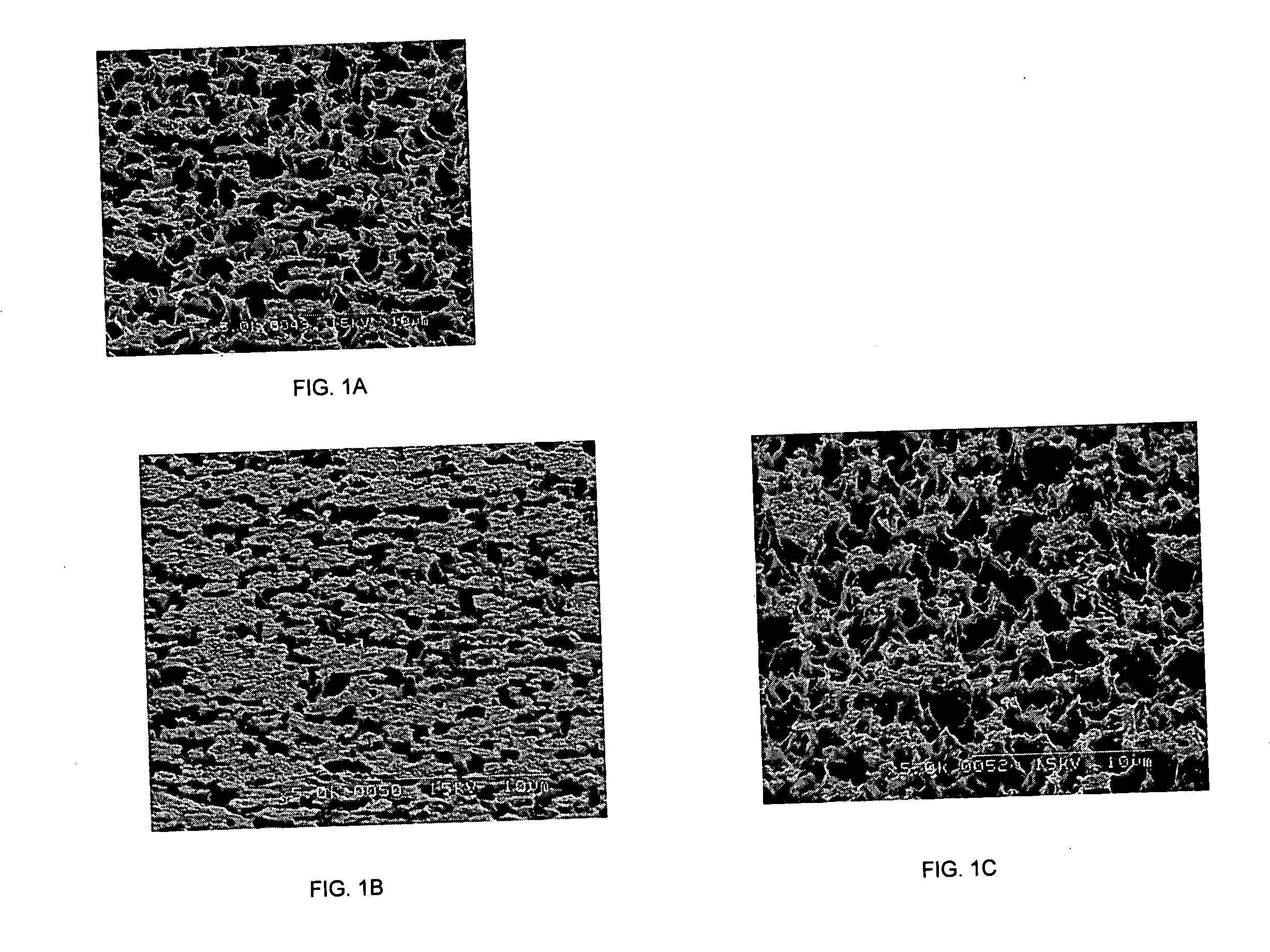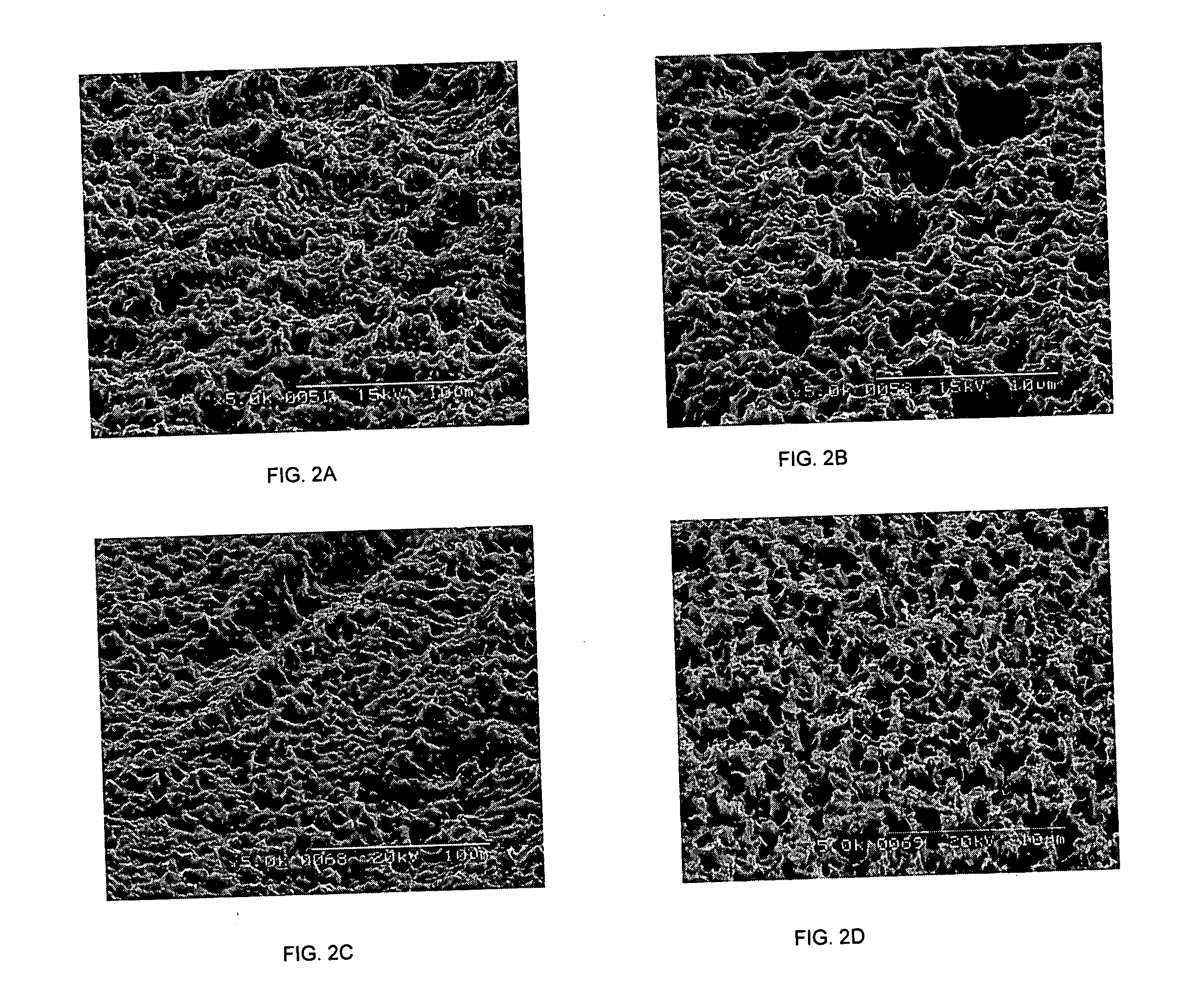Microetching composition and method of using the same
a composition and micro-etching technology, applied in the field of micro-etching compositions, can solve the problems of fluctuation in the etching rate, copper discoloration, and insufficient direct bonding strength of copper and resin layers, and achieve the effect of improving the bonding strength
- Summary
- Abstract
- Description
- Claims
- Application Information
AI Technical Summary
Benefits of technology
Problems solved by technology
Method used
Image
Examples
example 1
[0046] Acetonitrile was tested as an additive in a conventional copper chloride / sodium chloride microetching system. The modified system had the following composition:
Copper chloride43 g / lSodium chloride48 g / lAcetonitrile200 g / l
Hydrochloric acid to a pH of 1.0
[0047] The solution did not produce any better results than the conventional solution until a higher concentration of acetonitrile was used. At 200 ml / l of acetonitrile, a matte and brown surface was obtained with an etching depth of 170 microinches.
[0048] In order to reduce the etching depth, the concentration of copper chloride was reduced to 15 g / l from 43 g / l and no sodium chloride was added. The etching depth was thus reduced to about 59 microinches. A scanning electron microscope (SEM) image of the surface is provided in FIG. 1A.
[0049] Copper was then loaded at 5.3 g / l in order to artificially age the solution. Sodium chloride was added to control the etching rate and hydrochloric acid was added to control pH. An et...
example 2
[0051] The effectiveness of adiponitrile in a copper chloride / sodium chloride microetching system was also tested in accordance with the invention, and the following solution was prepared:
Copper chloride74 ml / l (43 g / l)NaCl48 g / lAdiponitrile 2 ml / l
Hydrochloric acid to a pH of 1.0
[0052] An etching depth of about 60 microinches was obtained and a SEM image of the surface is provided in FIG. 2A.
[0053] When P-400 (polyethylenimine, Mn-423) (available from Aldrich Chemical Company) was added to the composition, an etching depth of about 65 microinches was obtained. A SEM image of the surface is provided in FIG. 2B.
[0054] It was observed that solids formed in the solution after loading copper and a layer of yellow solid was present on the copper surface.
[0055] Butyl carbitol was used to dissolve the solid, and the following solution was prepared:
Copper chloride 74 ml / lNH4Cl 44 g / lButyl carbitol200 ml / lAdiponitrile 2 ml / l
[0056] An initial etch depth of 81 microinches was obtained, ...
PUM
| Property | Measurement | Unit |
|---|---|---|
| concentration | aaaaa | aaaaa |
| concentration | aaaaa | aaaaa |
| concentration | aaaaa | aaaaa |
Abstract
Description
Claims
Application Information
 Login to View More
Login to View More - R&D
- Intellectual Property
- Life Sciences
- Materials
- Tech Scout
- Unparalleled Data Quality
- Higher Quality Content
- 60% Fewer Hallucinations
Browse by: Latest US Patents, China's latest patents, Technical Efficacy Thesaurus, Application Domain, Technology Topic, Popular Technical Reports.
© 2025 PatSnap. All rights reserved.Legal|Privacy policy|Modern Slavery Act Transparency Statement|Sitemap|About US| Contact US: help@patsnap.com


